This case study is especially for students who aren’t doing well in Chinese. Whether you are failing or getting 60+, it’s never too late to improve.
We received a heartwarming message on 30th Sep, the day of the PSLE Chinese exam, from a mother of a P6 child who had recently subscribed to VocabKing.
The parent was enquiring if VocabKing supported Secondary school, as her child had improved by 20 marks in his prelims in just four months, and found the actual paper easier than prelims.
What made this story even more remarkable? He did it without tuition.
We are sharing this story so that students who aren’t doing well in Chinese don’t lose hope – it’s never too late to improve as long as you work hard and have the right plan.
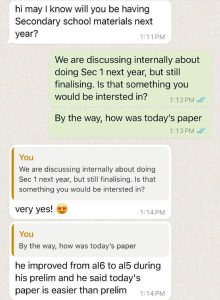
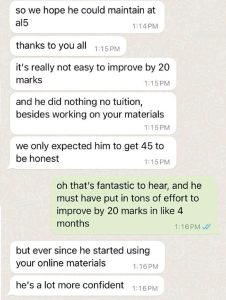
Struggling Due To Knowledge Gaps
Like many others, the student struggled with Chinese because of years of accumulated knowledge gaps. By P6, he was lacking confidence and overwhelmed by the demands of reading and comprehension at his level.
This sounds funny, but when a child is falling behind in school, sometimes the best thing to do is to rebuild foundations rather than focus on the immediate exam.
And that’s exactly what we did. Rather than jumping into P6-level materials, we started him back at P1.
Yes, you read that right. Primary 1. It might sound drastic, but it was exactly what he needed.
What’s the Problem?
Before diving into the strategy, we must first understand why do weaker students struggle? In our years of experience, it comes down to 1) knowledge gaps from previous levels, and 2) trouble comprehending sentences.
Did you know: the majority of words that appear in PSLE aren’t actually from P6, but are from earlier levels.

Due to lack of time, tuition will typically focus on your current level. Students are expected to plug knowledge gaps from previous years on their own, but getting students to willingly revise Chinese on their own isn’t realistic.
This is why students don’t improve despite years of tuition or enrichment.
Secondly, students might understand what a word means on its own (e.g. 照顾), but not comprehend it when used in a sentence (e.g. 我妈妈是护士,她会照顾病人。).
This goes back to how weaker students revise – revising the 词语手册 (word, pinyin, definition) alone and not practising the word in context through sentence and passage read-aloud.
The “Back to Basics” Strategy That Worked
Instead of diving into complicated P6 material, we started him with P1. The goal was to rebuild his vocabulary and reading comprehension skills chapter by chapter, level by level.
How and why, it worked:
1. Rebuilding Foundation & Confidence Step-by-Step
The plan was to ensure that the student mastered each chapter before moving to the next. For each chapter, the student needed to both recognise & understand core vocab (识读字) and practise reading it aloud in a sentence.
In particular, the sentences often utilised words from previous chapters, so there was constant reinforcement of vocab. By filling in all those gaps, he built both knowledge and confidence. And he would only move to P2 after he had a solid grasp on P1 (and repeat for other levels).
What we were doing might sound familiar to educators—it’s a form of Bloom’s Mastery Learning, adapted for learning Chinese.
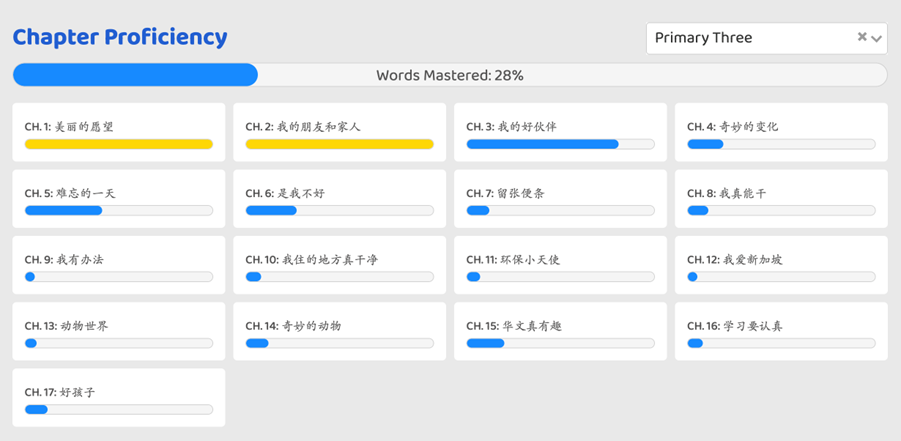
Parents can see their child’s full progress in real-time
2. Engaging & Personalised Materials
If learning isn’t engaging, students won’t do it, especially for Chinese.
That’s why we focus on motivation – students gain diamonds from doing fun games and bite-sized quizzes, which they use to redeem Popular and Roblox eVouchers. And as students see themselves improve, they naturally become intrinsically motivated to improve.
Indeed, the parent told us that her child was willing to revise from P1 as our material was “easy to follow and pretty fun”, and that he gained confidence from tackling easier questions first.
We believe every child can improve in Chinese, provided you use engaging material.
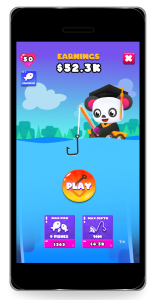

3. Real-Time Feedback & Correction with AI
How students handle mistakes is key. We utilise two key principles – firstly, students need to receive immediate feedback when they make a mistake, and secondly, there needs to be opportunities for correction.
Research shows that during learning, immediate feedback is more effective than delayed feedback. Empirically, we find that if a student is not receiving feedback on his errors, then he or she is likely to make them again.
One of the ways VocabKing does this is our fun oral fishing game where you have to read a sentence aloud. Students are given real-time feedback on tone, fluency and pronunciation via our AI engine, and the better you speak, the more in-game power you have (i.e. how many fishes you capture).
The system allows students to correct their mistakes and repeat the exercise until they get it right—something that’s often impossible in a classroom due to class size and time constraints.
This practice loop helped the student track his progress, make quick corrections, and build confidence in his spoken Chinese.
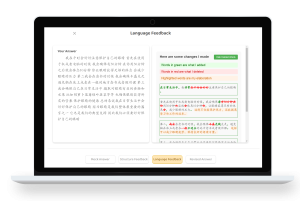
Hard Work Pays Off With The Right Tools
This approach isn’t about rushing – we only promoted the student after he had mastered the current level. But by systematically plugging the gaps in his knowledge, he rebuilt his foundation.
And the results speak for themselves: a 20-mark improvement in just 4 months.
In particular, the mother’s story reminded me of the importance of creating a judgment-free learning environment. By allowing her son to progress at his own pace, he had the freedom to truly focus on learning without fear of failure.
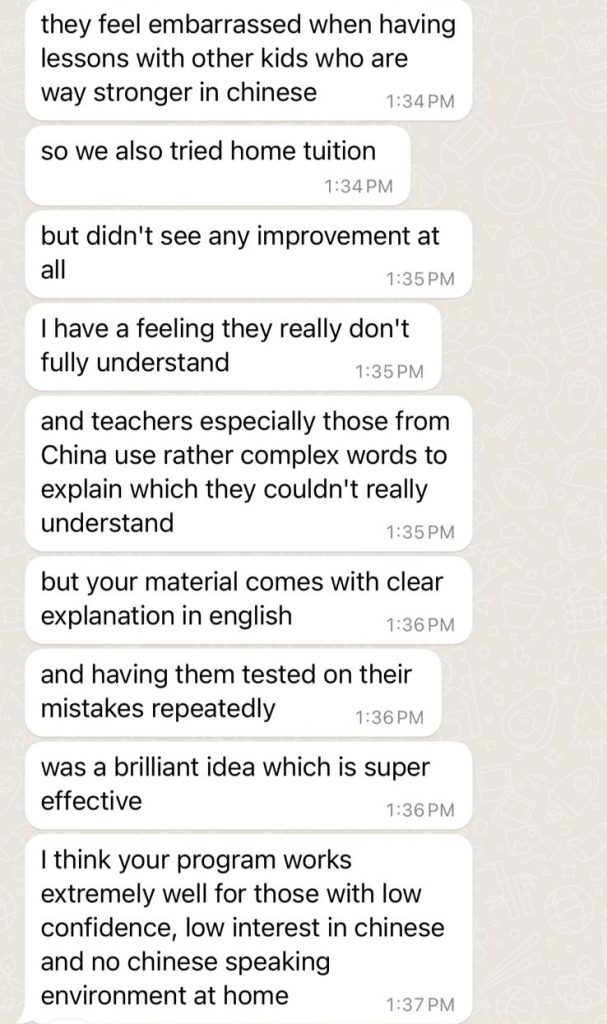
The good news? An incredible AL4 in his PSLE Chinese exam!

VocabKing: Your Essential Language Supplement
Your child can achieve this too. If your child is struggling with Chinese or you haven’t seen much improvement, VocabKing’s step-by-step approach and real-time feedback can support his or her learning journey.
Just to be clear – VocabKing is not a replacement for tuition/enrichment but your essential language supplement.
Tuition & enrichment cost ~$2,000 to $5,000 annually – while important, they are often unable to cover oral practice and knowledge gaps from previous years due to lack of time and/or large class sizes.
That’s where VocabKing shines. Our platform is designed to fill in these gaps, providing targeted support that helps children catch up in areas they may have missed and, crucially, help them excel in oral (25% of exam scores).
Start their journey with VocabKing today, and watch them improve with every step. Create your FREE 7-day trial account here: https://learn.kidstartnow.com/login or contact us at: +65 9820 7272 for more information.
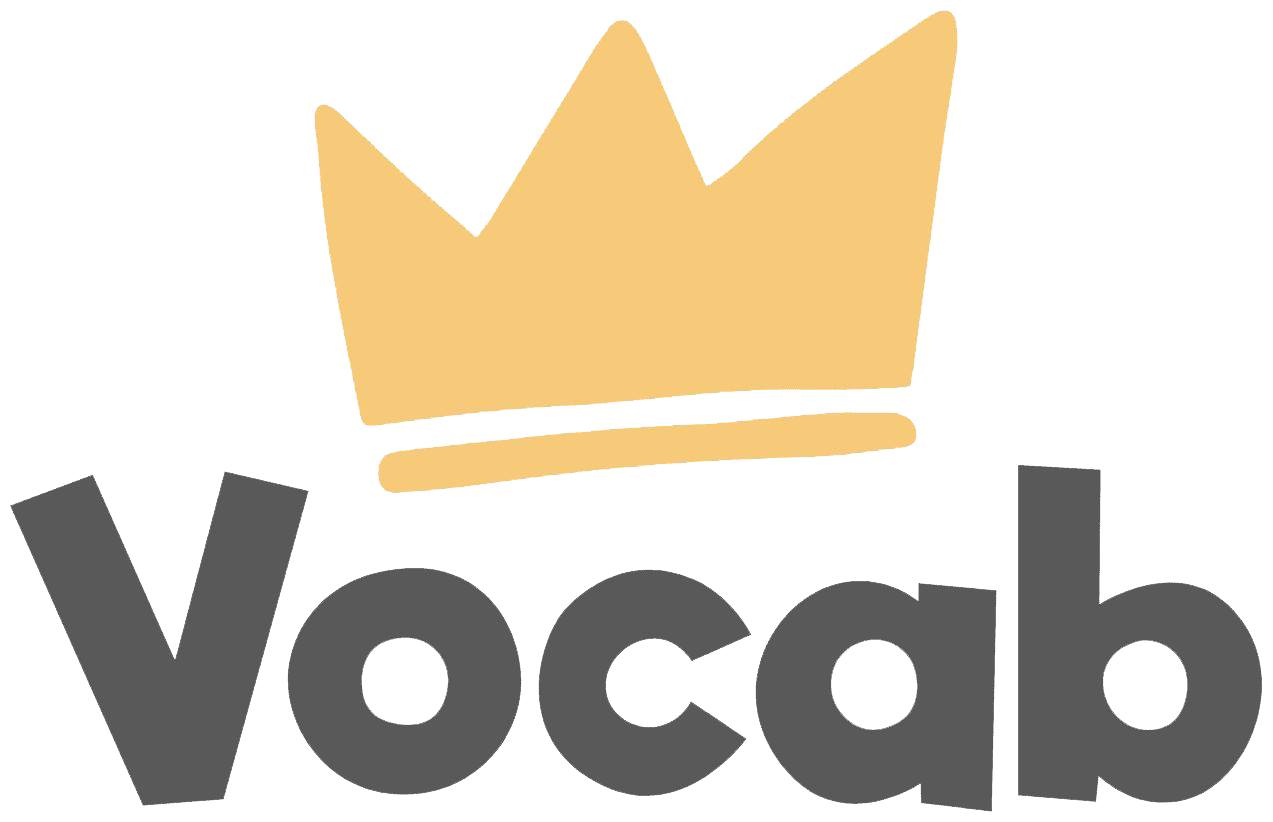

No responses yet